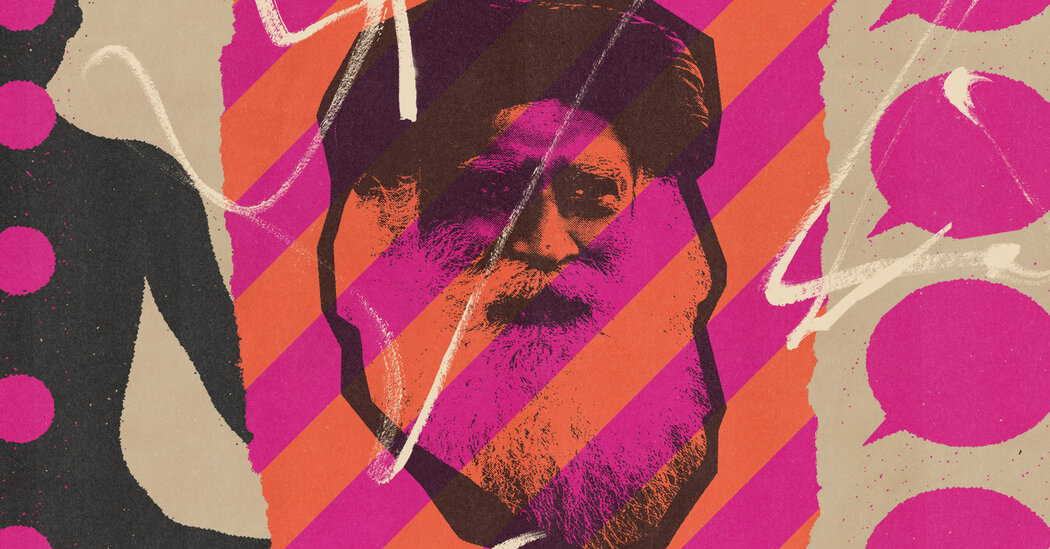The algorithm of entertainment was not built for ancient knowledge extracted from sacred spaces.
At age 25, as the story goes, Jagadish Vasudev rode his motorcycle up into the Chamundi Hills near Mysore, India, sat on a stone and dropped into his first mystical experience. Tears of “indescribable ecstasy” streamed down his face, and when he emerged from meditation, many hours later, he had begun a new life as a spiritual leader. His mission was to teach all people how to achieve the blissful liberation he first came to know in those hills.
This is the origin story of Sadhguru, the chosen name of Vasudev, now 67. He has become one of the most prominent spiritual figures of the internet era. His Isha Foundation, started in 1992, is now an empire of yoga instruction and environmental activism, with tens of millions of followers across YouTube, social media, a podcast and a proprietary app. The foundation’s physical center in Coimbatore, India, is the size of a small town, with a school, ashram and temple. Isha has also expanded into the United States with the Institute of Inner Sciences in McMinnville, Tenn., a rural location chosen for its proximity to several major American cities. Sadhguru intends to develop the 17,000 acres of the institute into a community of 20,000 to 30,000 people.
In the spring of 2023, I visited the institute for one of Sadhguru’s talks specifically designed for celebrities, influencers and writers who could spread the word of Isha. About 150 people waited for hours for the doors to open and then sprinted to be close to the stage. On Sadhguru’s entrance, the room lifted in adoration. I remember a child beside me clutching her drawing of the guru. Nearby, a TV actress beamed at his presence.
In person, Sadhguru was impressive and funny, with the slick charisma of a politician, but when we shook hands later I felt no otherworldly aura. Despite his mystical experiences, he seems more like an approachable celebrity than a hermetic cult leader. He has done interviews with Joe Rogan, Logan Paul and Matthew McConaughey and has counseled Will Smith and SZA. His online persona balances wisdom with a sarcasm that undercuts the image of the overserious guru.
Sadhguru’s media trajectory echoes the rise of Maharishi Mahesh Yogi, who founded Transcendental Meditation and befriended the Beatles in the 1960s. Such yogic fame was a path first laid in the early 20th century by people such as Swami Vivekananda and Paramahansa Yogananda, who are in part responsible for bringing yoga to the West. Considering the omnipresence of yoga today, these missionaries were undeniably successful. But it is the scandals of yoga that usually characterize the American skepticism toward the guru, from acts of political bioterrorism by Osho’s followers to allegations of sexual abuse against Bikram Choudhury.
Sadhguru seems to be aware of the uneven history of past yogic communities and has a few of his own scandals, including questions about his wife’s process of yogic death and his purported encroachment upon Indian forests. So he actively distances himself from the history of yoga controversies, joking that “guru is a four-letter word” and explaining that his name is a description for a self-made guru without formal lineage. He scoffs at the idea of learning yoga from books, though he has written many best sellers, which, he specifies, are meant as inspiration, not instruction. “I do not give any teaching to anyone,” he tells me. “All I am doing is trying to confuse the hell out of you.”
